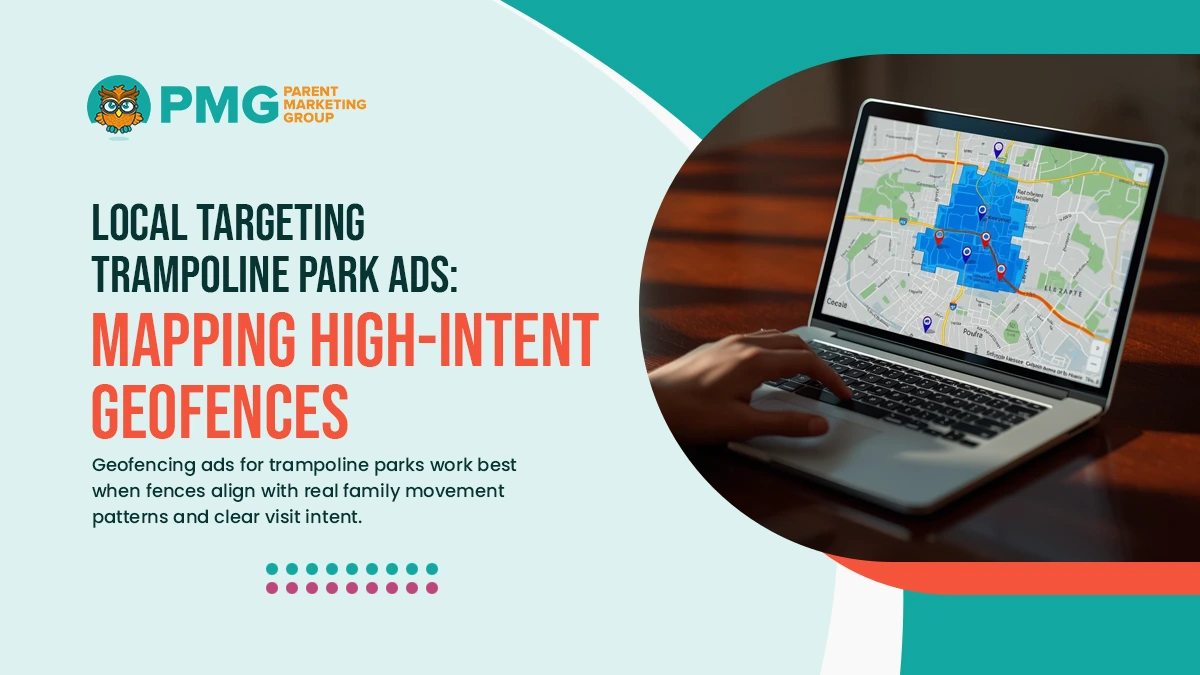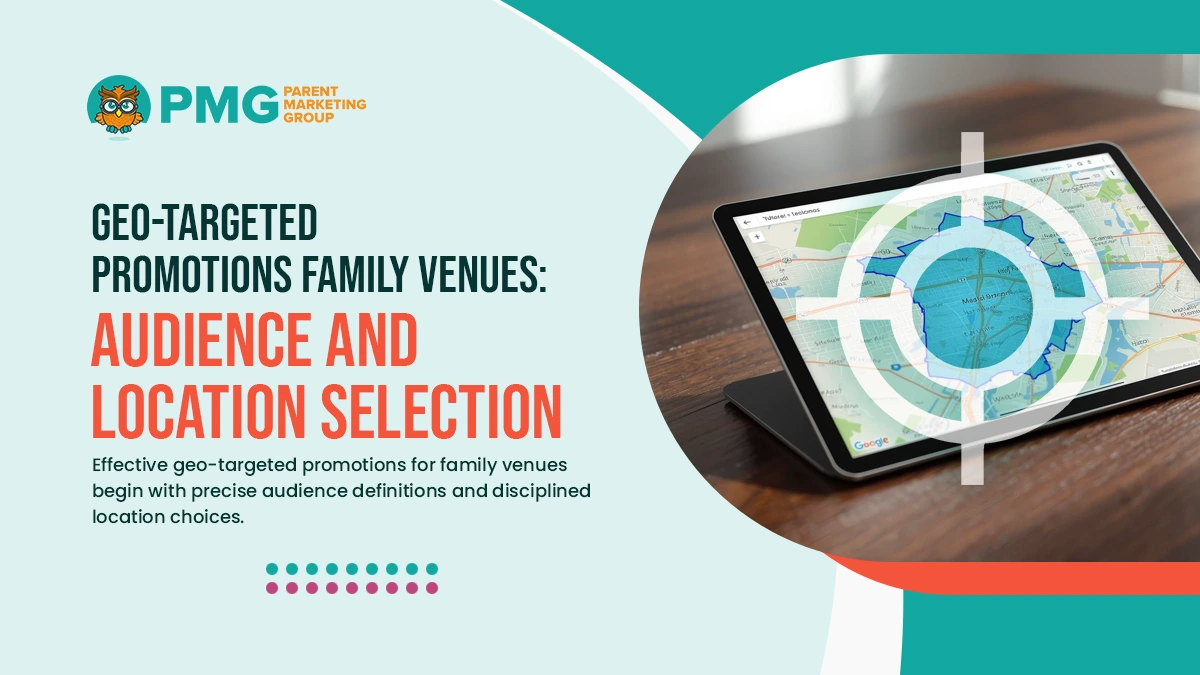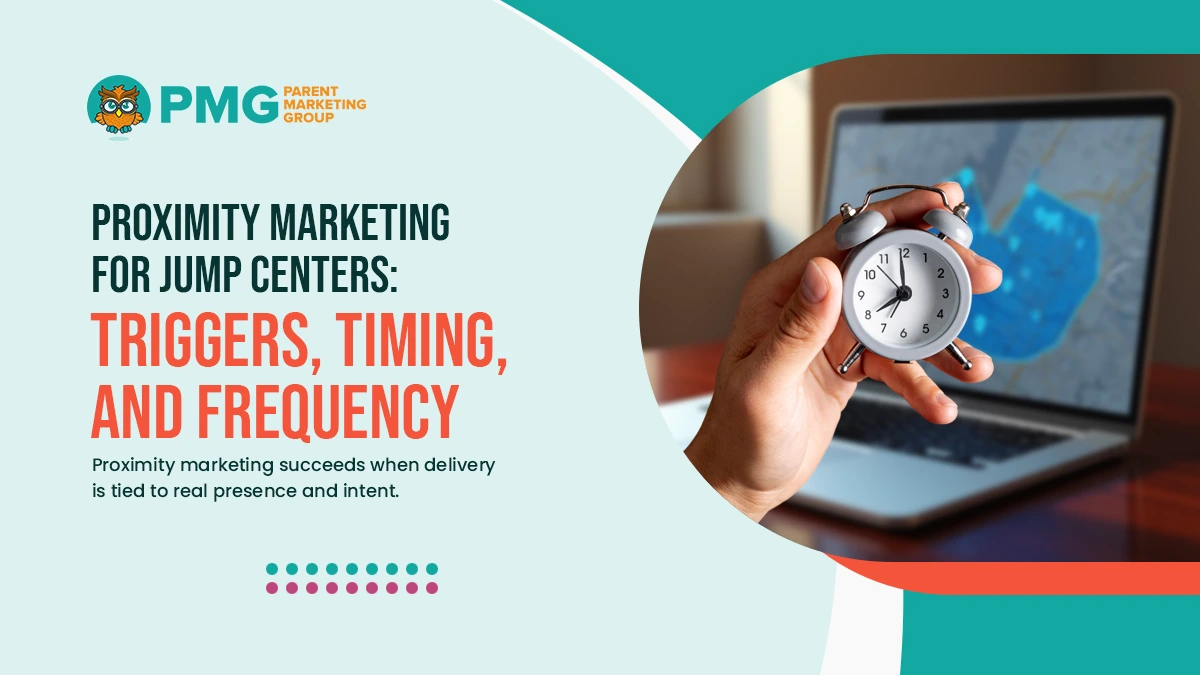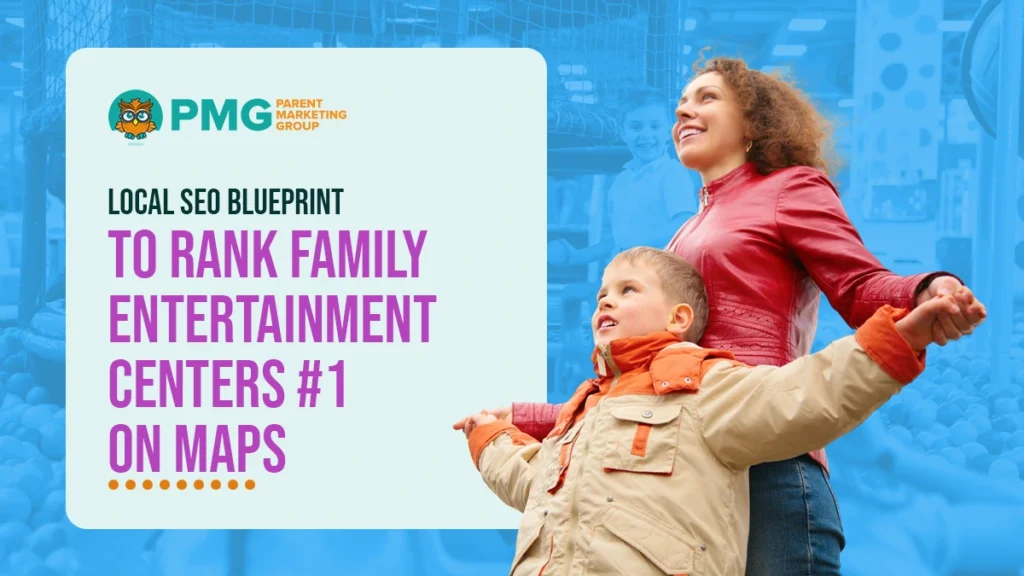Geofencing ads for trampoline parks use precise mobile location signals to reach families near your venue, competitors, and high-traffic family hubs, converting proximity into visits. By drawing virtual boundaries around schools, sports complexes, malls, and event centers, you can deliver timely offers, party packages, and limited-time promotions to parents within a defined radius.
Strong measurement is built in: track impressions, clicks, store visits, and cost per visit, then optimize budgets toward top-performing fences. Align messaging with hours, weather, and local calendars, and connect campaigns to online booking and POS data to attribute revenue accurately. The result is practical, local demand generation.
Local Targeting Trampoline Park Ads: Mapping High-Intent Geofences

Geofencing ads for trampoline parks work best when fences align with real family movement patterns and clear visit intent. Use local data to prioritize areas where parents make quick activity decisions and where short travel times favor an in-venue visit.
Identify High-Intent Destinations
Begin by mapping places where families already choose active play and nearby entertainment. Validate footfall volume and scheduling patterns before committing to spend.
- Competitor Venues: Other trampoline parks and indoor play centers where intent is already present.
- Youth Activity Hubs: Schools, sports complexes, dance and gymnastics studios that attract recurring family traffic.
- Family Retail Clusters: Malls, cinemas, and big-box anchors with weekend peaks and after-school spikes.
- Community Magnets: Libraries, recreation centers, and seasonal fairs that signal planned family time.
Start with a manageable set of 10–20 fences and rank them by expected cost per visit and party-booking potential.
Set Radii, Dwell, and Lookback Windows
Precision improves relevance while filtering pass-through traffic. Use polygons rather than simple circles whenever platform tools allow.
- Standalone Parcels: 60–120 meters centered on entrances and primary parking approaches.
- Shared Lots and Malls: 150–300 meters focused on anchor corridors and common ingress points.
- Dwell and Lookback: 5–10 minutes dwell to confirm presence and a 7–14 day lookback for timely follow-ups.
Pair these settings with clear conversion definitions (map taps, bookings, deposit starts) so optimization signals align with business outcomes.
Segment Zones and Apply Overlap Controls
Different goals require distinct clusters and controls to protect the budget and maintain message clarity.
- Prospecting Zones: Schools and family retail will introduce offers and build first-time visits.
- Conquest Zones: Competing parks and active-play venues will shift the choice near the moment of decision.
- Overlap and Exclusions: 200–500 meter buffers between adjacent fences, plus exclusions for highways, offices, and your own site.
Monitor visit rate, cost per visit, and redemption density by fence each week. When schools are fenced, target adult devices associated with caregivers and follow platform age policies to maintain compliance.
Geo-Targeted Promotions Family Venues: Audience and Location Selection

Effective geo-targeted promotions for family venues begin with precise audience definitions and disciplined location choices. For trampoline parks, focus on nearby parents and caregivers who are in planning mode or already visiting complementary destinations. The framework below aligns audiences, dayparts, and site lists to drive measurable local visits.
Define Parent and Caregiver Segments
Start with audience traits that correlate with short-trip, fun-focused decisions. Use platform signals and first-party data to refine reach without diluting relevance.
- Life Stage Targeting: Parents and caregivers of children ages 4–14 are aligned with birthday parties and active play use cases.
- Interest Signals: Engagement with youth sports, indoor activities, school events, and local family guides.
- Household Patterns: Frequent weekend outings, after-school travel, and proximity to community facilities.
- Exclusions: Recent visitors, employees, and professional service categories with low family intent.
Close the loop with value-based or lookalike modeling from past party deposits and repeat visitors to scale efficiently.
Daypart and Seasonal Cadence
Timing shapes intent for trampoline park visits. Build schedules around community rhythms and weather patterns that influence indoor activity choices.
- After-School Windows: Weekday 2–7 p.m. to capture quick decisions between school and dinner.
- Weekend Peaks: Late mornings and afternoons when families plan longer recreation blocks.
- Weather Triggers: Rain, heat, or cold that increases preference for indoor play.
- Holiday Calendars: School breaks, early dismissals, and local tournaments that shift demand.
Maintain frequency caps by journey stage so reminders stay helpful, and align promotions with staffing and capacity.
Location Selection and Quality Controls
Choose sites that signal family intent and remove areas that create noise or inflate reach without visits. Validate each location with footfall data and test small before scaling.
- Primary Sites: Competitor trampoline parks, indoor play centers, youth sports complexes, and swim or gymnastics schools.
- Secondary Sites: Malls, cinemas, family dining corridors, libraries, and community centers.
- Exclusion Zones: Highways, office parks, industrial areas, and your parcel to avoid misattribution.
- Overlap Buffers: 200–500 meters between adjacent fences to protect budget and message clarity.
Apply platform age policies, target adult devices associated with caregivers, and audit vendors for compliant location data. Track visit rate and cost per visit by site list to prioritize the highest-yield locations.
Proximity Marketing for Jump Centers: Triggers, Timing, and Frequency

Proximity marketing succeeds when delivery is tied to real presence and intent. Set clear triggers, align to community rhythms, and control repetition so messages stay relevant and welcome.
Define Proximity Triggers
Use precise triggers to separate true visitors from passersby. Pair entry and dwell logic with short lookbacks to keep outreach timely and useful.
- Enter Trigger: Fire only when a device crosses a polygon near primary entrances or parking.
- Dwell Threshold: Require 5–10 minutes on-site to filter quick drive-through or curbside stops.
- Exit Trigger: Re-engage after a verified visit to encourage return trips or party planning.
- Lookback Window: Limit eligibility to the last 7–14 days for recency and stronger intent.
Audit trigger performance weekly and refine polygons to match footpaths, not just property lines.
Align Messaging to Time and Context
Match delivery to families’ decision windows. Coordinate with school schedules, weather, and local events that increase indoor activity demand.
- After-School Windows: Focus on 2–7 p.m. with quick-visit offers and simple CTAs.
- Weekend Peaks: Emphasize late morning through afternoon with family bundles and party prompts.
- Weather Signals: Increase bids during rain, heat, or cold when indoor play rises.
- Event Overlays: Target tournament venues or community fairs where families gather nearby.
Confirm staff readiness and capacity before raising volume, and pace spending around predictable surges.
Apply Frequency and Recency Controls
Protect attention by setting ceilings on exposure and sequencing messages by visit stage. Calibrate caps per cluster to avoid fatigue and cost inflation.
- Frequency Caps: Limit daily and weekly impressions per device for balanced visibility.
- Recency Sequencing: Serve awareness first, then offer-led creative within 24–72 hours.
- Post-Conversion Suppression: Pause ads after redemptions or bookings to prevent waste.
- Cross-Device De-duplication: Use platform tools to reduce overlap across phones and tablets.
Track visit rate, cost per visit, and redemption density by trigger and time block, then reallocate budget to combinations that consistently produce verified store visits.
Campaign Architecture: Platforms, Pixels, and Integrations
A resilient campaign architecture connects the right media platforms with clean measurement and reliable data flows. Deliberately build each layer so budgets optimize to verified visits, bookings, and party deposits.
Select Platforms and Roles
Choose platforms based on their strengths in local reach, mapping, and mobile presence. Define the role each channel plays in prospecting, conquesting, and retargeting.
- Google Maps/YouTube/Performance Max: Local discovery, “near me” intent, and high-frequency reach.
- Meta (Facebook/Instagram): Visual offers, family audience segments, and remarketing depth.
- Programmatic DSPs: Precision geofencing, mobile in-app inventory, and footfall measurement options.
- Waze/Local Networks: Navigation moments and community event overlays.
Document the objective and KPI per channel before launch to keep optimization focused.
Define Conversions and Pixel Hygiene
Measurement begins with clear, business-aligned events. Implement only what you will optimize and report against.
- Primary Events: Online booking starts/completes, party deposit, call lead, map tap for directions.
- Quality Signals: Time on page, package configurator use, and add-ons viewed.
- De-Duplication Rules: Prioritize server events over browser when both fire.
- UTM Standards: Consistent naming for source, campaign, creative, and fence cluster.
Review firing accuracy with test traffic and reconcile against platform diagnostics weekly.
Data Layer and Server-Side Tagging
Strengthen reliability and privacy with a structured data layer and server delivery.
- Unified Data Layer: Surface booking value, party size, and location to every tag.
- Server-Side Tagging: Stabilize attribution and reduce browser loss from ITP and ad blockers.
- Consent Mode: Respect user choices while modeling eligible conversions.
- Event Versioning: Maintain change logs for fields and schemas.
Coordinate with developers to implement version control configurations and backup containers.
Connect Booking, POS, and CRM
Close the loop so optimization targets revenue, not just clicks.
- Booking Platform: Pass booking IDs and values to ad platforms via offline or API uploads.
- POS Feeds: Attribute walk-in spend and party add-ons to campaigns and fences.
- CRM Journeys: Trigger nurture for birthday inquiries, group sales, and repeat visits.
- Data QA: Spot-check match rates, duplicate IDs, and timestamp drift.
Establish a weekly cadence for importing sales outcomes and updating value-based bidding.
Conclusion
You do not need louder ads, but must be present at the right moment. For a jump center, that means showing up where families already choose activity and giving them a clear next step that fits today’s plans. When proximity, timing, and creativity are aligned, marketing becomes an unobtrusive nudge that respects parents’ time and turns interest into action. Each week, study what moved people, refine the fences, refresh the offers, and keep only what proves its value. Over time, this rhythm steadies foot traffic, strengthens the party pipeline, and protects margins in peak and shoulder hours.
If your goal is reliable local growth, build this rhythm and keep it simple, measurable, and valuable to families. Ready to put this into practice? Call (716) 303-4133
or visit https://parentmarketing.com/contact-us.





